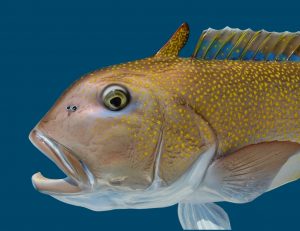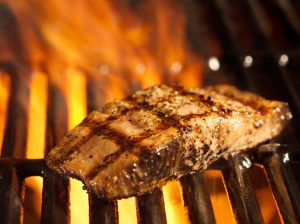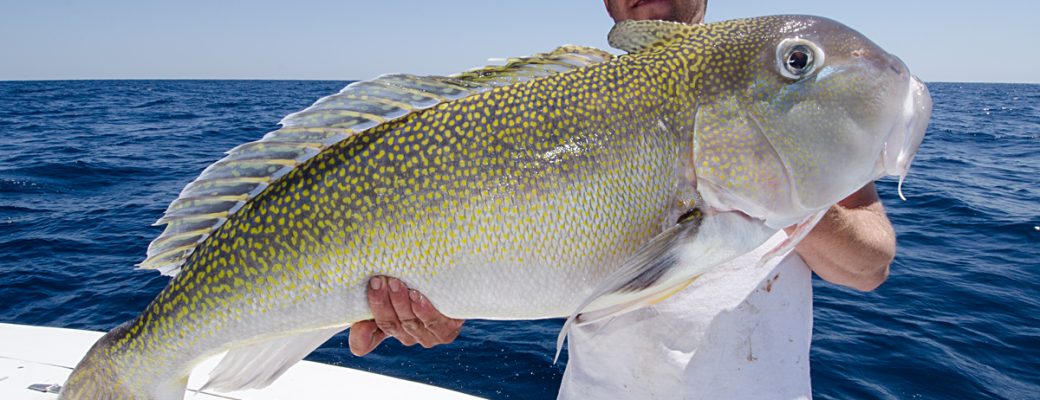Dining on Tilefish
The Tilefish can be discovered in deep waters (200 to 1400 feet) in the Gulf of Mexico. Tilefish are part of the to the Malacanthidae species, a group of fish that is widespread in temperate and tropical waters. They are bottom fish with strong teeth, and eat shrimp, crabs, shellfish, sea urchins, sea cucumbers, squid, and an occasional fish.
HISTORY OF THE TILEFISH
Tilefish have a somewhat curious history, having actually been very first ‘found’ in 1879 off Nantucket Island in the western Gulf Stream. They were discovered in abundance and were fished commercially for just a few years up until 1882 when, after a serious storm, 10s of millions of dead and dying tilefish were found in between Delaware Bay and Cape Cod. It would be practically 10 years prior to any tilefish being found again, and even longer before commercial fishing for them would resume. It is thought that the die-off happened when the storms triggered an upwelling of cold waters into their warmer Gulf Stream habitat.
DESCRIPTION OF A TILEFISH
2 species, the golden tilefish (Lopholatilus chamaeleonticeps) and the blueline or gray tilefish (Caulolatilus microps), are fairly abundant in Gulf of Mexico waters. The golden tilefish is the most colorful fish with a blue-green back that fades to a pearly white belly.

It is touched with red and blue iridescence, highlighted by irregular yellow-gold areas and ocean-blue under the eyes. Integrated with these colorful markings is the adipose flag or crest on the head. The blueline tilefish is similar in taste to the golden tilefish, but it is not as vibrant.
WHERE TO FIND TILEFISH
Along the southeastern coast and in the Gulf, tilefish live in deep waters and sometimes gather in pods or little groups at depths ranging from 200 to more than 1,400 feet. Tilefish do not school, however they group in clusters near the heads and sides of marine canyons along the external continental shelf. A Gulf of Mexico Charter Boat Captain can assist you in locating Tilefish if that’s what you want on your menu.
TILEFISH ATTRIBUTES
Their diet plan of crab and shrimp, etc. makes their meat white, tender, flaky, and somewhat sweet. The tilefish is extra-lean with very little fat and oils. If you’re a fan of lobster, the chances are excellent you’ll enjoy Tilefish.
COMPARABLE TASTING SPECIES
Amberjack, Tilapia, Grouper, Lionfish, Snapper.
Just How Much TO BUY
– Whole fish: 3/4 to 1 pound per person.
– Dressed or cleaned up fish: 1/2 pound per person.
– Fillets or steaks: 1/4 to 1/3 pound per person.
PURCHASING, STORAGE, AND HANDLING
Remember to buy seafood last and keep it cold during the journey back home.
Fresh entire fish must have:
- A shiny surface area with tightly sticking scales.
- Gills that are deep red or pink, devoid of off-odor, slime and mucus.
- Clean shiny belly cavity with no cuts or protruding bones.
- A mild aroma, comparable to the ocean.
Fresh steaks, fillets, and loins ought to have:
- A clear appearance.
- Flesh that is firm and not separating.
- A mild smell, similar to the ocean.
- No staining.
- Packaging that keeps them from being bent in an abnormal position
PREPARATION
– Keep raw and cooked seafood separate to prevent bacterial cross-contamination.
– After dealing with raw seafood thoroughly clean knives, cutting surfaces, sponges, and your hands with hot soapy water.
– Always marinate seafood in the refrigerator.
– Discard marinade; it includes raw juices that might harbor bacteria.
When marinade is needed for basting, reserve a bit prior to cooking. Make sure marinade cooks well.
Don’t add uncooked marinade at the very end.

COOKING YOUR TILEFISH
– The basic guideline is 10 minutes per inch at the thickest part of the fillet or steak, at 400-450 degrees.
– If fish is cooked in parchment, foil or a sauce, include 5 minutes to the overall cooking time.
– Fillets less than 1/2 inch thick do not require to be turned during cooking.
– Fish cooks quickly. Be careful not to overcook, otherwise the fish while take on a dry and tough texture.
– Fish is done when the flesh ends up being nontransparent and flakes easily when tested with a fork.
– Poaching, steaming, baking, broiling, sauteéing, and microwaving are outstanding low-fat cooking techniques, if you do not include high-fat ingredients.
– Marinate in your favorite salad dressing prior to cooking.
– Broil, bake, microwave or steam, then cube and contribute to pasta or salad greens for a tasty salad.
– Broil or grill with lime-butter and skilled salt.
– Oil the grill to prevent fish from sticking.
– Bake whole fish with a crab or shrimp stuffing.
– Add leftover fish in damaged pieces to sauces, salads, or soups.

